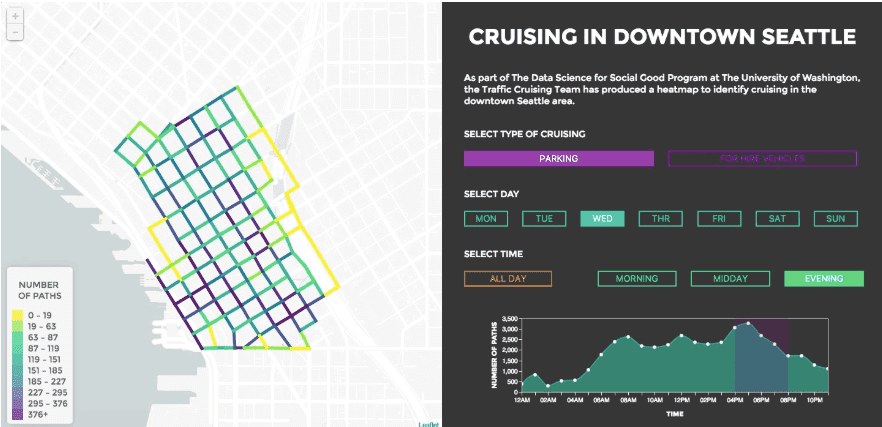"You know that feeling where you are on time in the morning and everything is going great and your commute is actually 10 minutes shorter than expected? Yeah, I don't either."
Brett Bejcek
That's why I, along with some really smart people worked all summer on a project to help congestion in downtown Seattle. We had access to sensor data at some Seattle intersections and we worked to develop algorithms to identify:
-
Individuals Looking For Parking
-
For-Hire Vehicles Operating Without a Passenger
This is known as "vehicle cruising" and it is a major contributor to traffic congestion in downtown Seattle. To get a better understanding of where vehicles cruise, we used traffic sensor data to generate most-likely paths traversed using a modified Djikstra's algorithm. We manually segmented the paths by time and method of transportation to create ground-truth data. After segmentation, we introduced metadata to describe the trip and used a semi-supervised machine learning approach to label the data. Ultimately, we built a data pipeline using RethinkDB that fed a Python Flask web application. This interactive heat map of downtown Seattle can be used in real-time to visualize the relative levels of vehicle cruising in the city.

Check out the project on the Microsoft Blog or on our Github Repo, which has helped inform many other traffic projects.